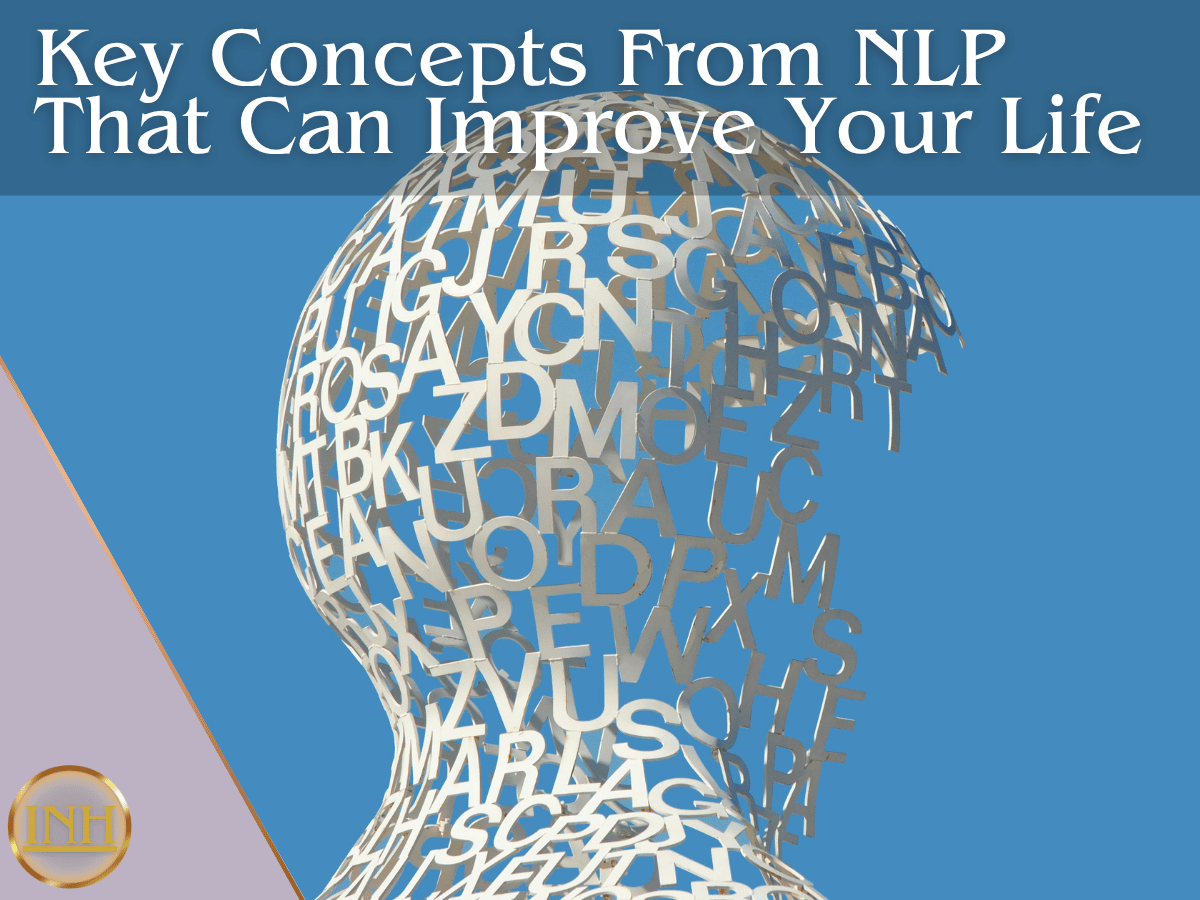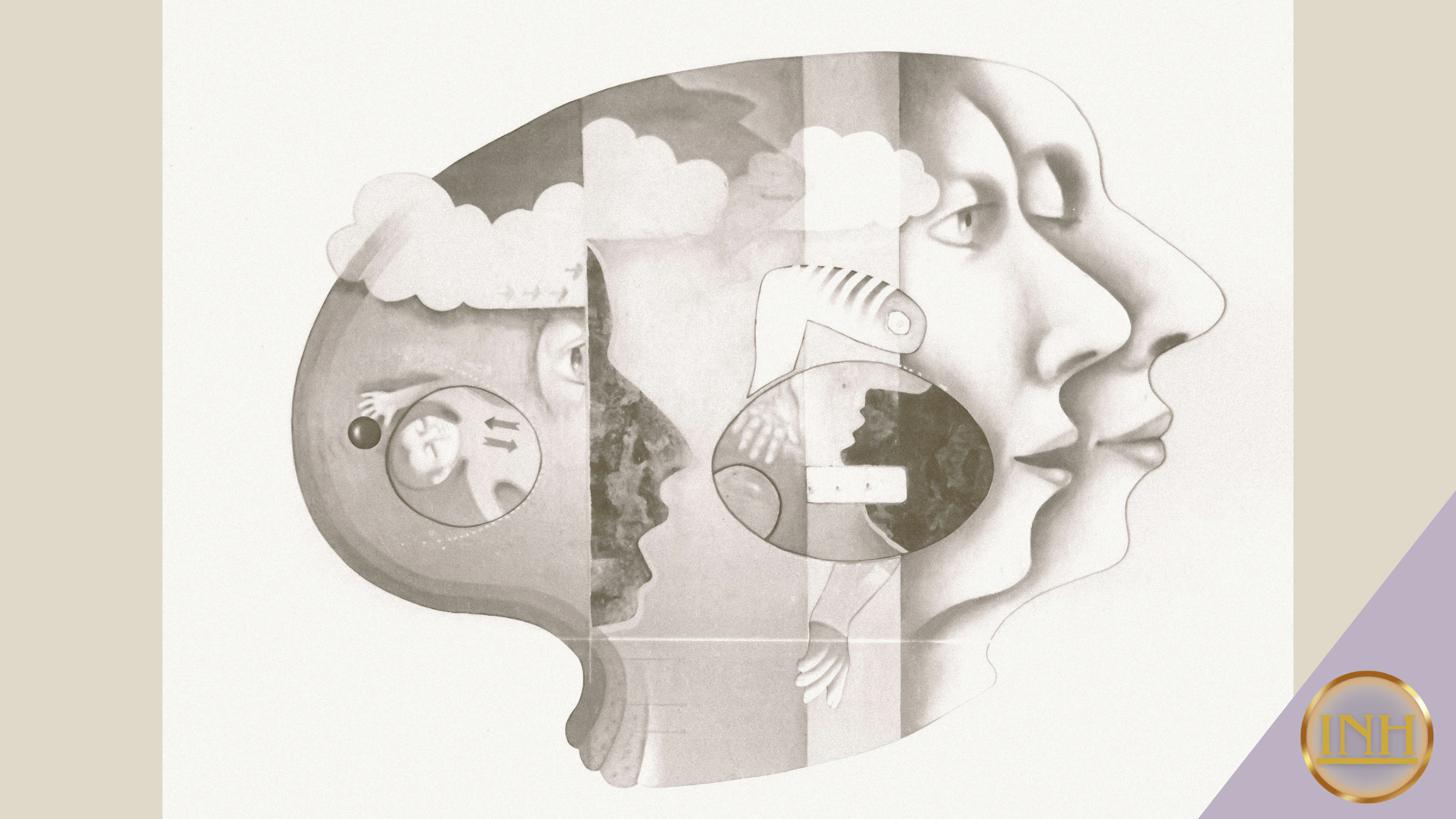Key Concepts from NLP That Can Improve Your Life
Language is absolutely fascinating. It’s all around us (and inside us) at almost all times, and yet we barely take a moment out of our busy days to think about it. You’ve probably heard people talk about how impactful our inner voice can be on our day-to-day life. The way we talk about ourselves and others has a real impact on our experience of the world. But almost as much as what we are saying, how we are saying it can have a big impact too.
In today’s blog we’ll look at how our language creates our reality, through the lens of NLP (neuro-linguistic programming). We’ll be discussing nominalizations, the language of sensing, submodalities, presuppositions, and more. Let’s dive in!
What Is NLP?
NLP stands for Neuro-Linguistic Programming, and despite sounding like something from a sci-fi movie where someone gets their brain reprogrammed through a headset, it’s really a down-to-earth, very practical field.
Created in the 1970s by Richard Bandler (a computer science student with a knack for modeling behavior) and John Grinder (a linguist who wanted to understand how people get good at things), NLP started out as a way to decode excellence. Bandler and Grinder studied therapists like Milton Erickson and Virginia Satir to see what made their communication so effective. From there, NLP expanded into a toolkit for communication, change, and personal growth.
Richard Bandler, in his book Guide to Trance-Formation (2008), explains that NLP is about learning how to use the language of the mind to consistently achieve the results you want in life. Sounds useful, right?
1. Nominalizations: When Verbs Get Trapped in Nouns
Let’s start with one of my favorite linguistic troublemakers: nominalizations.
A nominalization is when we take a verb (an action) and turn it into a noun (a thing). “Decision,” “relationship,” “failure,” “success,” “depression,” and “motivation”, are all examples. The issue is, once you’ve frozen a verb into a noun, it starts to feel solid, unchangeable… like a wall of ice blocking your way.
Take the phrase, “I’m stuck in this relationship.” “Relationship” in this sentence is a nominalization. But relationships are not solid objects, they’re processes! They're made up of actions, interactions, patterns. You can change those. But if you treat “relationship” as a concrete object, it feels fixed, and suddenly you’re stuck.
A simple reframe might be: “The way we relate to each other hasn’t been working lately.” Now it sounds like something that can be changed—because it can.
Pro tip: If you can’t put it in a wheelbarrow, it’s probably a nominalization.
2. The Language of Sensing: Visual, Auditory, Kinesthetic, and Beyond
Another core idea in NLP is the concept of representational systems, aka the different ways we internally represent the world.
Most people process reality through some combination of:
Visual (images, colors, spatial relationships)
Auditory (sounds, words, internal dialogue)
Kinesthetic (feelings, physical sensations, movement)
Olfactory and Gustatory (smell and taste, less common but powerful for memory)
When we talk, we reveal our primary system by the kinds of words we use:
“I see what you mean.” → Visual
“That rings a bell.” → Auditory
“This just doesn’t feel right.” → Kinesthetic
Being aware of these can drastically improve communication. If your partner is a visual processor and you're talking in feelings, you may both miss each other’s point. Learning to match and mirror someone’s representational system helps build rapport, and makes your message land.
As Bandler says in The Structure of Magic, “The meaning of your communication is the response you get.” If the message isn’t being received, it’s up to us to adjust how we deliver it.
3. Submodalities: Tuning the Internal Dials
Let’s go deeper.
Within each representational system are submodalities—the finer details of how you experience an image, sound, or feeling.
For example, in your mind, you might have a picture of a stressful event. That image might be:
Big or small?
In color or black and white?
Moving or still?
Close or far?
Changing submodalities changes how you feel about that event. It’s like turning the emotional volume down, or up.
One common NLP technique is the Swish Pattern, where you take a mental image that feels “bad” and quickly replace it with an image that feels “good,” changing the submodalities along the way. The brain begins to rewire its associations, often instantly.
It might sound silly, but it works. And it works fast. (Which is one reason why skeptics get nervous. It almost seems too easy.)
4. Presuppositions: The Hidden Commands in Your Language
Now we’re getting sneaky.
Presuppositions are the assumptions hidden inside our sentences. These can shape reality—without anyone even noticing.
Take this sentence:
“What will you do differently next time you succeed?”
This assumes:
There will be a next time.
You will succeed.
You can make a choice.
Sneaky? Yes. Empowering? Also yes.
Compare that to:
“Why do you always mess up?”
That question assumes:
You always fail.
It's your identity.
You’re broken.
Ouch.
In Frogs Into Princes, Bandler and Grinder talk about using language that builds possibilities rather than limiting them. We do this by becoming aware of our presuppositions and intentionally choosing ones that lead to growth.
5. Anchoring: Emotional Buttons You Can Actually Push
Anchoring is one of NLP’s most useful party tricks, and one of its most therapeutic tools.
An anchor is a stimulus that evokes a consistent internal response. Classic example: Pavlov’s dogs. But humans do it too. A certain smell might bring you right back to your grandma’s kitchen. A song might instantly bring on tears (or a dance break).
In NLP, we can intentionally create these emotional shortcuts.
Let’s say you want to feel calm before public speaking (want more tips on public speaking? Read this blog). You could recall a memory of deep relaxation, intensify it, and pair it with a physical gesture, say, touching your knuckle. After a few rounds, your brain wires that gesture to that emotional state. Boom. You now have a calm anchor you can fire anytime.
(Just don’t anchor “confidence” to something like jumping in the air. You’ll look a bit odd in that boardroom presentation.)
6. Reframing: Change the Frame, Change the Picture
Last but not least: reframing.
Reframing is exactly what it sounds like: changing the frame around an experience to change what it means.
A classic Bandler-ism: “It’s not the experience that’s the problem—it’s the meaning you give it.”
Say you get rejected from a job. One frame: I failed. Another frame: I dodged a bullet. Yet another: The universe is redirecting me to something better.
Reframing doesn’t mean denying reality. It means choosing an interpretation that empowers you, instead of disempowering you. And often, that’s the difference between spiraling and growing.
Final Thoughts: You Are Already Doing NLP (Badly or Well)
The funny thing about NLP is that you’re already doing it every day.
You’re already talking to yourself. You’re already using sensory language. You’re already reacting to internal images and sounds and feelings. NLP just gives you the manual so you can start doing it with purpose.
Instead of saying, “I’m anxious,” maybe now you’ll say, “I’m running the anxiety program again. Time to adjust the settings.”
Instead of thinking “I’m not a confident person,” maybe you’ll say, “Confidence is something I do. So what happens right before I do it, and how can I do it more?”
Richard Bandler famously said:
“The greatest personal limitation is to be found not in the things you want to do and can’t, but in the things you’ve never considered doing.”
So here’s your invitation to consider.
Questions Answered (for curious minds)
What is NLP and how does it work?
NLP (Neuro-Linguistic Programming) is a method of understanding and reprogramming thought patterns and behaviors using language and sensory-based techniques. It works by helping you become aware of how your mind represents experiences—and then adjusting those representations to improve outcomes.
Can NLP techniques help with anxiety?
Yes, NLP techniques like anchoring, submodality shifts, and reframing are commonly used to reduce anxiety and improve emotional regulation.
What are examples of NLP in daily life?
Every time you use inner dialogue, visualize an outcome, or react emotionally to a word, you're engaging in NLP. Becoming conscious of these patterns gives you more control over them.
How is NLP different from hypnotherapy?
NLP and hypnotherapy both work with the subconscious mind, but NLP is more cognitive and language-based, while hypnotherapy uses trance states to achieve deeper access to inner resources. Many practitioners use both for best results.
Is NLP really worth it?
That depends on what you want out of life. If you're looking for fast, practical tools to change how you think, communicate, and feel—then yes, NLP can absolutely be worth it. It's not a magic wand, but it’s definitely a power tool. Many people notice improvements after just a few sessions.
What is the downside of NLP?
The biggest downside? It's sometimes sold like snake oil by people who don't fully understand it. When used responsibly, NLP is empowering. But when it's misrepresented as a tool to “control” others or guarantee instant success, it can lead to disappointment or misuse. Like any tool, it depends on who's holding it.
How much does an NLP session cost?
That depends on who you’re seeing. Some coaches charge hundreds for a single session, while others include it as part of a larger toolkit. At Integrate Now Hypnotherapy, NLP is just one of the tools used to help you achieve your goals, alongside transpersonal hypnotherapy, regression work, and other techniques tailored to your inner world. If you’re curious, visit our book now page to see current rates and schedule a free 15 minute consultation.
Is NLP better than hypnosis?
It’s not really an either/or situation. NLP and hypnosis often overlap. In fact, NLP was heavily inspired by hypnotherapy—especially the work of Milton Erickson. Practitioners of NLP often induce trance in their clients, and Richard Bandler has frequently said that non-normal states of consciousness are powerful for inducing change. So whether you’re calling it NLP or hypnosis, you’re often tapping into the same mental territory.
What are the risks of NLP?
Well, what are the risks of living life? NLP, when practiced ethically and intelligently, can help you become more awake, aware, and in control. But if misunderstood or misused, it could lead to confusion or false expectations. Some people think it gives them the ability to manipulate or control others, which is both untrue and… kind of gross. Real change starts with respect—for yourself and others.
Have more questions about Neuro-Linguistic Programming or Hypnotherapy? Reach out to Brandon and schedule a 15-minute consultation!




